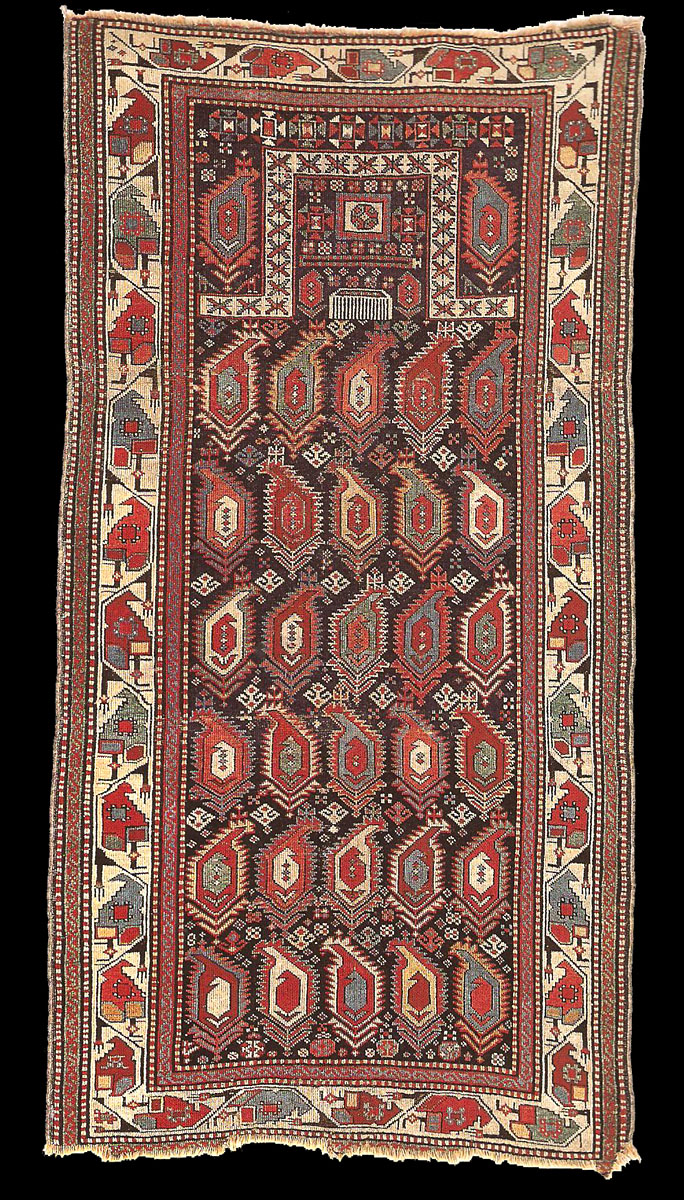|
The town of Akstafa is situated in the Kazak weaving area (Azerbaijan),
near the rail line that runs parallel to the Kur River between Tiflis and
the town of Genje in the eastern Caucasus. It has little or nothing to do
with a group of rugs named Akstafa, which were woven in south Shirvan
(although Ulrich Schurmann mentions the town in connection with a Kazak rug,
published as plate 26 in Caucasian Rugs).
The rug shown here combines features from so many east Caucasian weaving
areas that precise attribution is difficult. While it has various Marasali
characteristics - flaming boteh, a "bird" boteh and the typical Marasali
palette - other features indicate a different origin. The
"boteh-inside-boteh" (or "pregnant" boteh) is not a Marasali feature and is
found in Akstafa and Daghestan boteh rugs. The square prayer arch filled
with X motifs is another Akstafa feature, as is the comb and square beneath
the arch.
The guard borders, back and structure appear to be Shirvan, but the
double-bundled blue cotton overcast selvedges are more typical of Kuba and
Daghestan, although occasionally a feature of Akstafas as well.
Warps: ivory wool, Z3S, 18 threads per inch (72 per dm)
Wefts: white cotton, 10 knots per inch (40 per dm)
Pile: wool, symmetrical knot, 90 knots per sq. inch (1440
knots psd)
published at Ralph Kaffel's Caucasian Prayer Rugs as plate 85
 |

